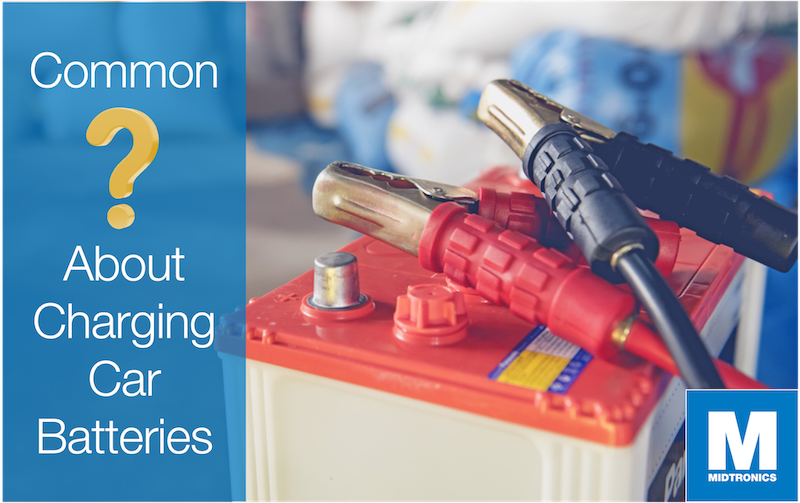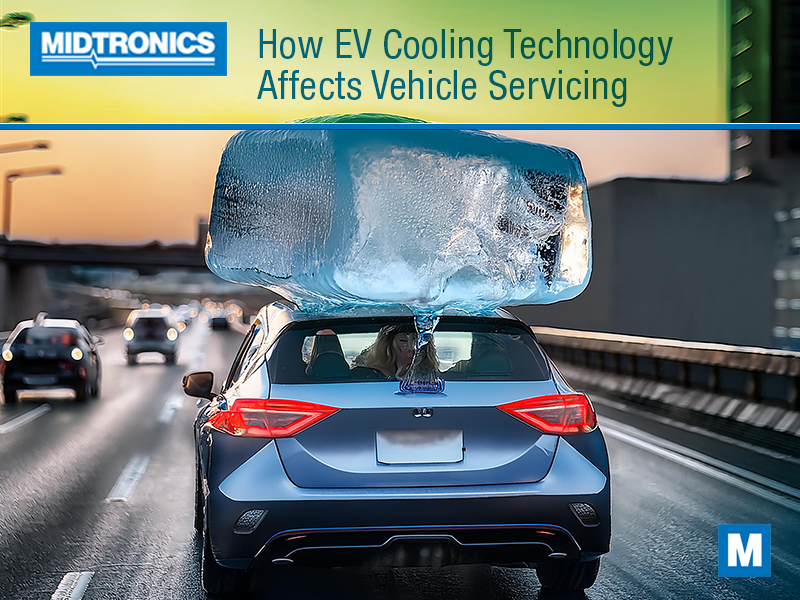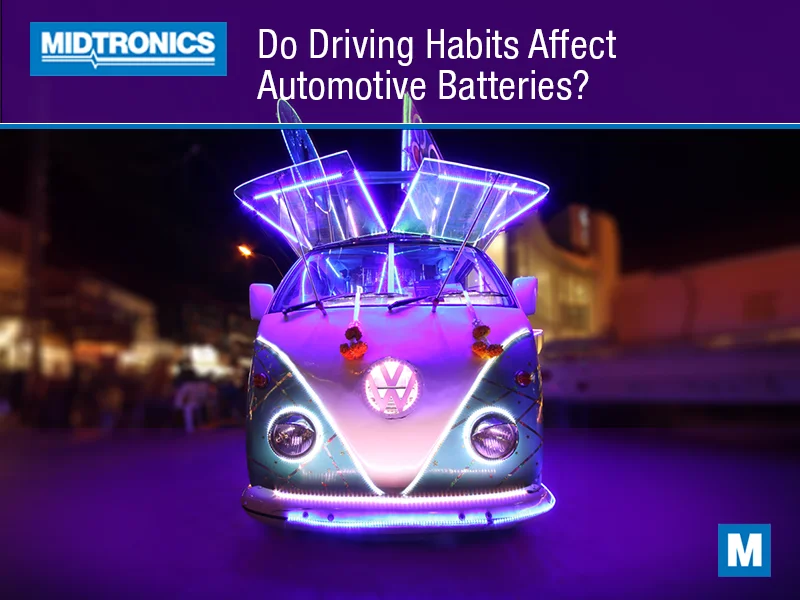Whether you’re a car owner or an automotive professional in sales, parts, or service, it’s impossible to know everything about vehicle technology. Car batteries, for example, seem like a basic component but there’s plenty to go wrong and even more to misunderstand about how they work.
If you’ve had a question about a car battery that you feel you should know the answer to, know that you’re not alone. A Google search will reveal the same concern from thousands of other people in a similar situation. We’ve compiled four common questions about charging a car battery and answered each one so you better understand the ‘why’ or ‘how’ behind each one.
Can a dead battery recharge itself?
Here’s the scenario. You’ve cranked the engine over, but it didn’t fire up or stay running right away. Perhaps you need to turn the ignition several times or it’s an extended cranking interval , and the starter begins to turn slower than when you initially turned the key. It might even crank so slowly that it stops altogether. But after letting it sit for ten minutes, an hour, or overnight, there’s surprisingly enough power for the engine to turn over again.
The battery hasn’t self-recharged, even though it might seem that way. What happens is that the high drain has caused a reaction inside the battery and byproducts of the energy discharge like hydrogen gas build up on the plates. Essentially, they create a barrier for electrons to flow through the separator and the battery appears discharged.
After resting, the elements built up on the plates dissipate and the electrons can flow again. The battery hasn’t recharged itself but the trapped energy is now available to use once again. That’s why the engine might crank strong again after leaving it for a while.
Does revving the engine charge a battery faster?
You might need to recharge a battery after leaving the lights on and jump-starting it. It’s a common occurrence, especially on vehicles that don’t have protective systems that go to ‘sleep’ after a set time of inactivity. But a jump-start doesn’t recharge the battery, so you’ll need to run the engine to charge it up.
At idle, a small charge from the battery is drawn by the alternator and magnified using an electromagnet, bur the alternator doesn’t operate at its full potential at low RPMs. For instance, a 90-amp alternator might only produce 60 amps at 800 RPMs, but the car’s electronics draw 35 to 50 amps. A small amount still goes to recharge the battery, but it will take more than an hour to recharge a battery at that low rate. When you maintain a higher RPM, you maximize the alternator’s power production when it spins around 6,000 RPM, but it’s at a ratio of about 3:1 with the crank pulley, so 2,000 RPM will usually achieve its maximum output.
As a result, driving at higher RPMs will indeed recharge a flat battery faster than at idle, and in about one-quarter or one-third of the time.
Why don’t you connect the negative when jumping a car?
Boosting or jump-starting a car’s battery is done when it doesn’t have enough energy stored to turn the engine over on its own. Most drivers think that connecting the red clamps to the positive terminals on each side and the black clamps to the negative terminals on each side is the correct process, but that can have serious safety consequences.
When jump starting a car, the negative cable, which is usually the black one simply for identification sake, should not be connected to the dead car’s battery. Instead, it is connected to an unpainted metal surface on the engine or chassis of the car. This is because connecting the negative cable to the dead battery could cause a spark, which could potentially ignite any hydrogen gas that may have accumulated in the vicinity of the battery.
Now, countless drivers have connected the black cable directly to the battery when boosting it, and it’s often with no ill effects or explosion. Still, the danger could be there and if it is, it’s undetectable. So to be as safe as possible, connect the black cable to a bare metal spot on the dead car’s chassis rather than the battery terminal itself. Any spark will be far enough away to avoid igniting dangerous gases.
What temperature kills a car battery?
You’ve gone out to your car in a heat wave or cold spell and the engine won’t turn over. Your mechanic says the battery needs to be replaced, even though it was working fine just before the weather turned. Is it temperature related? It could be.
Extreme temperatures can have a negative effect on car batteries. High temperatures can cause the battery fluid to evaporate, reducing the battery’s overall performance and potentially causing damage. Chemical reactions occur at a much higher rate when the temperature increases, and sulfation, bulging, and shedding inside the battery are more likely.
On the other hand, extremely low temperatures can cause the battery fluid to freeze, which can also damage the battery and reduce its performance. According to industry standards, a lead-acid car battery is usually considered to be in a safe temperature range between 0 to 122 degrees F. Once the temperature goes beyond this range, the battery capacity and performance drops. At 0 degrees F, the battery tends to lose about half of its power, but if the battery is at approximately half of its capacity when it hits 0 F, the electrolyte inside can freeze. That damages the plates. Even a fully charged battery can freeze if it reaches 76 F, and a fully discharged battery is at risk of freezing at 32 F.
It’s also worth noting that a battery which is already weak or near the end of its life may be more susceptible to damage from extreme temperatures. Proper maintenance and regular checking of the battery condition can help to extend its lifespan and performance. The best bet is to keep your battery in a moderate temperature range as much as possible and maintain a full charge.




